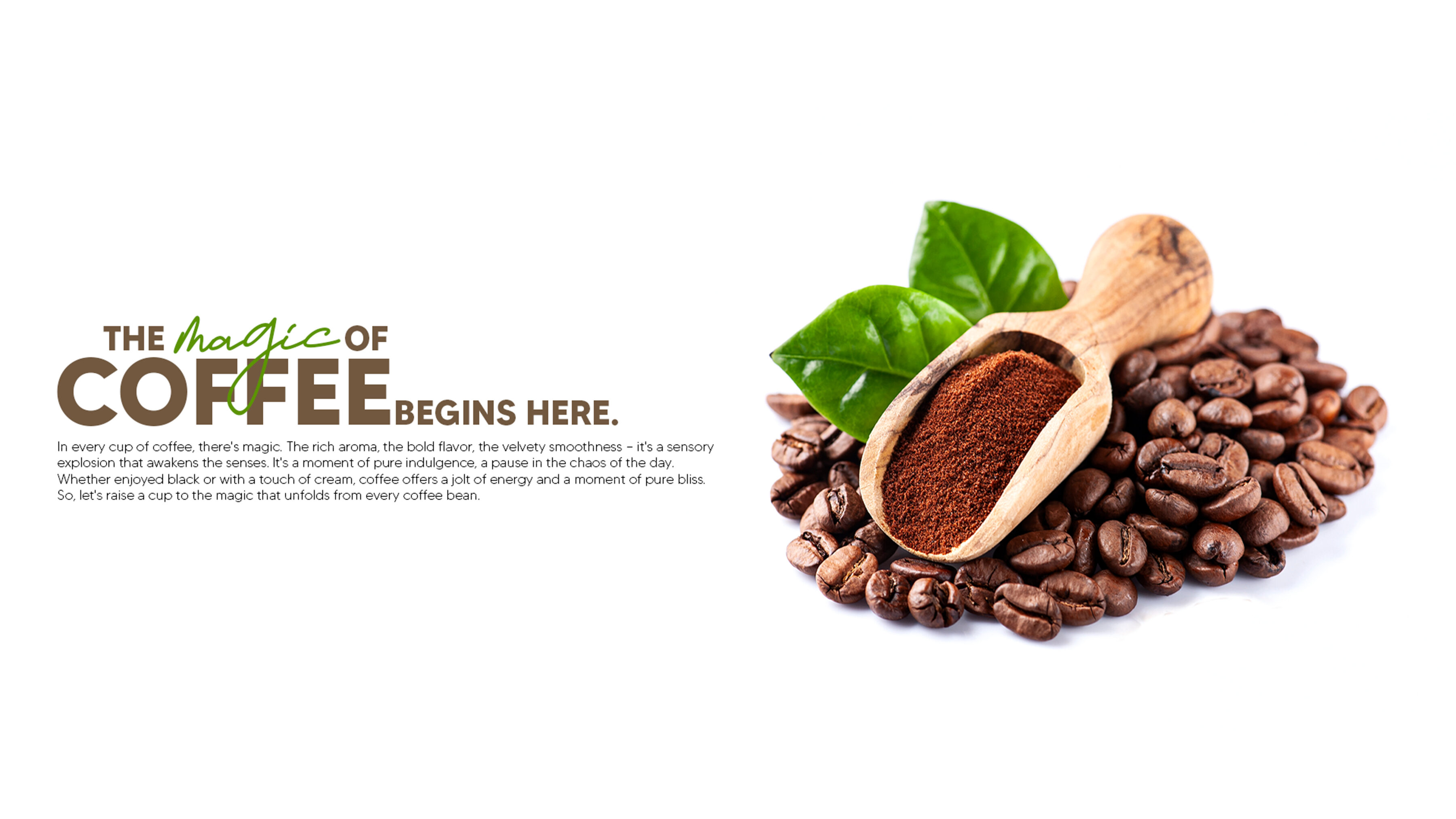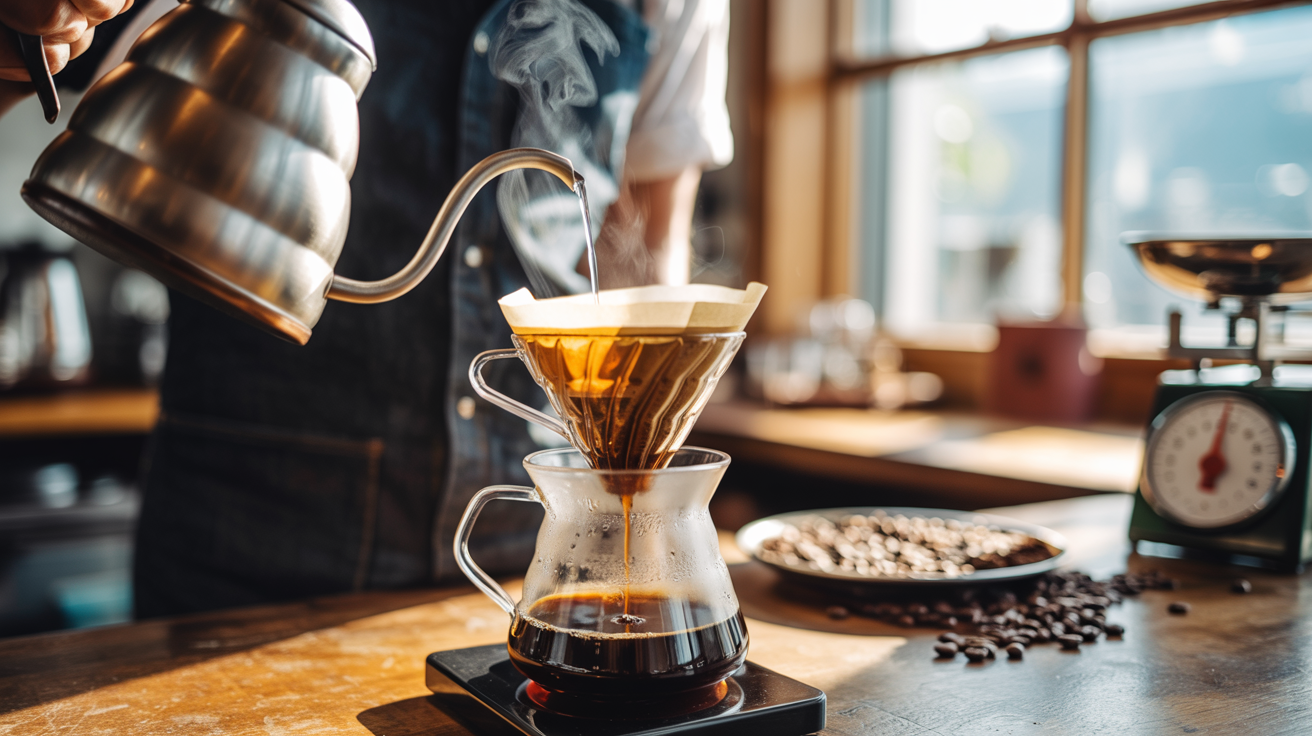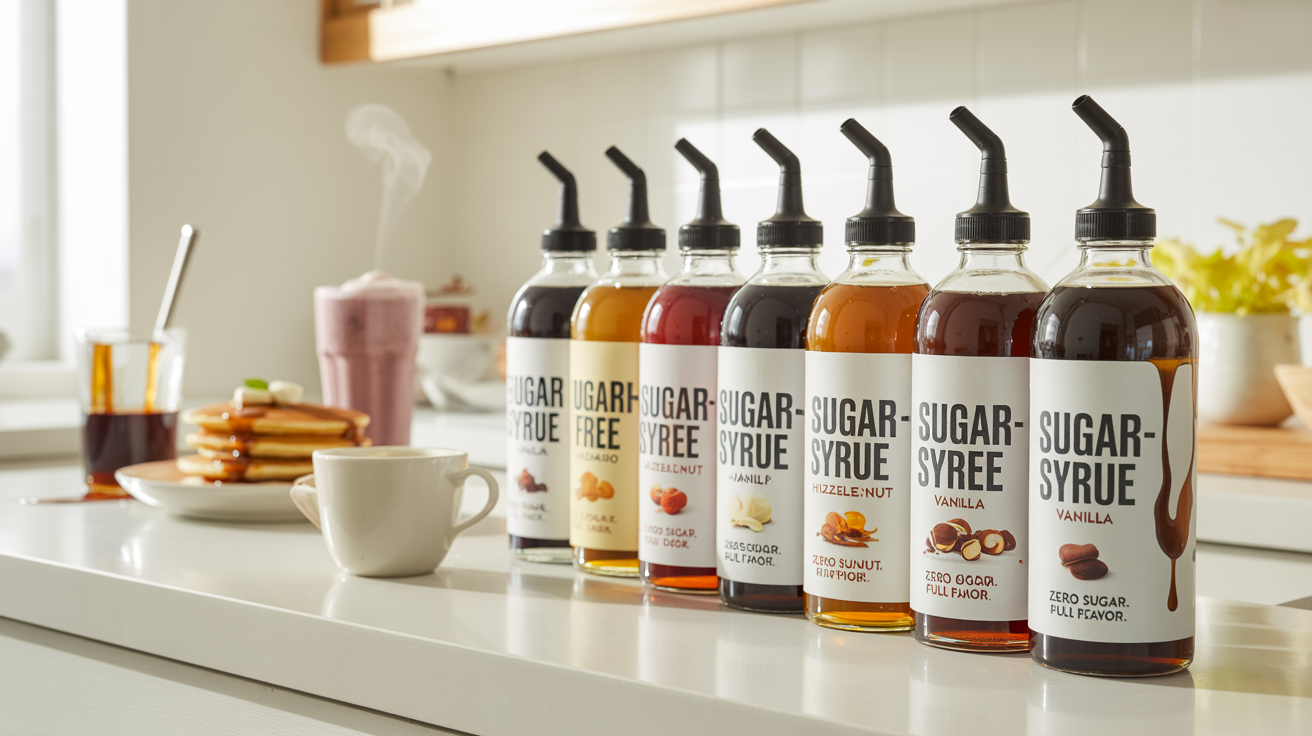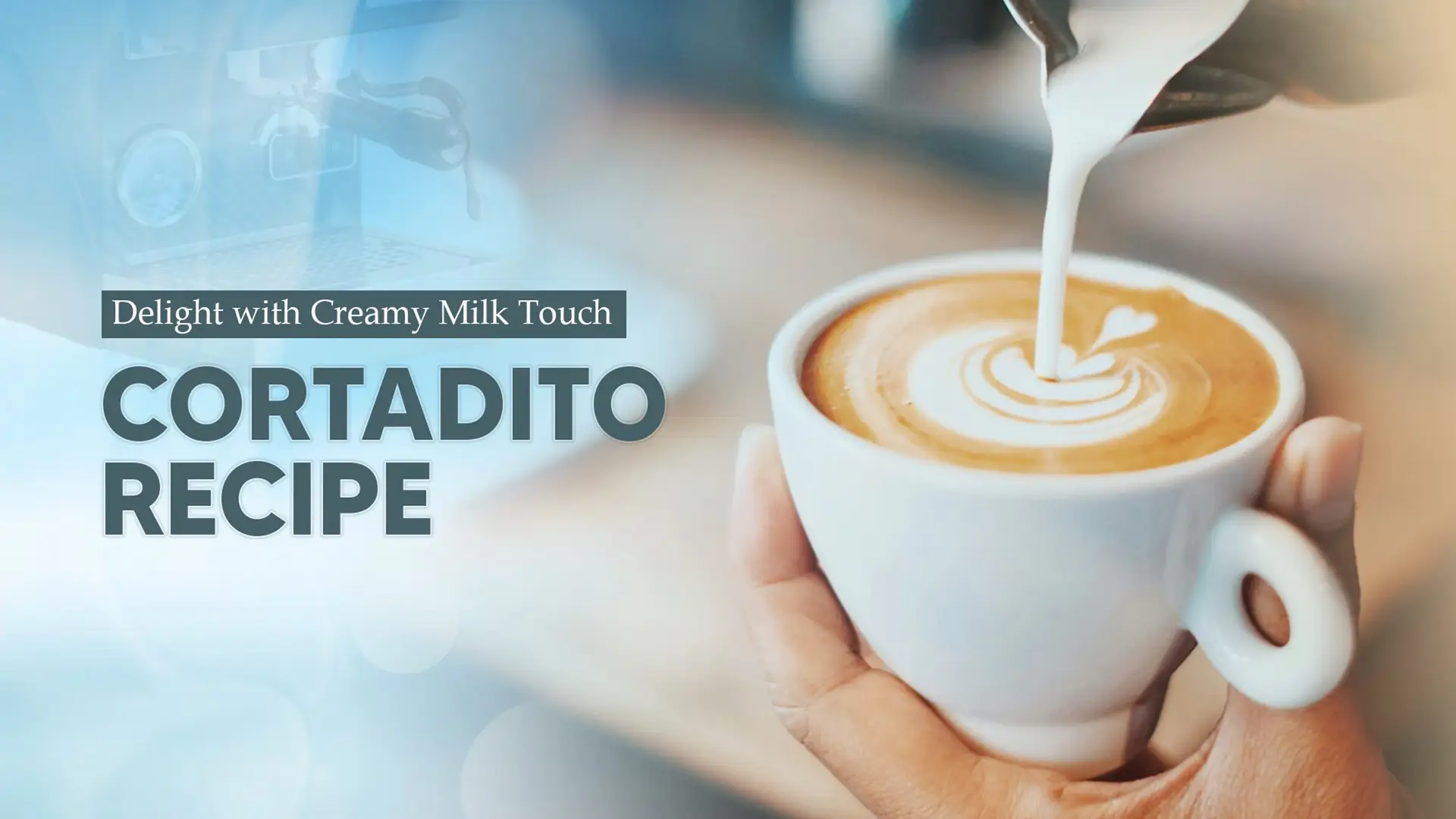Unlocking the Secrets of Coffee Beans: Types, Roasting, and Brewing Unlocking the Secrets of Coffee Beans: Types, Roasting, and Brewing...
Read MoreBest Coffee Syrups to Enhance Your Espresso and Lattes
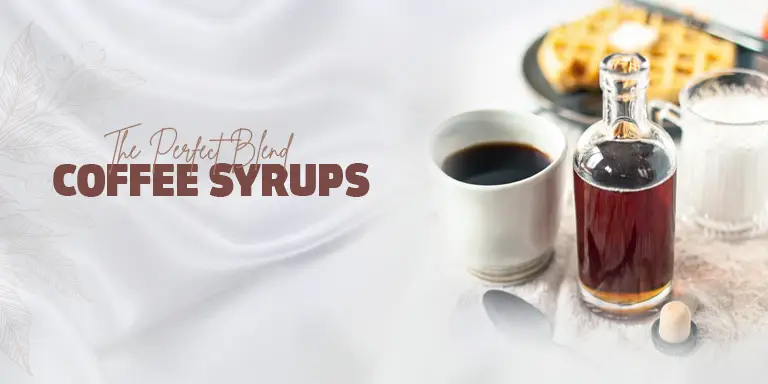
Coffee Syrups: Discover the Best Flavors to Elevate Your Morning Brew!
Coffee Syrups: Discover the Best Flavors to Elevate Your Morning Brew!
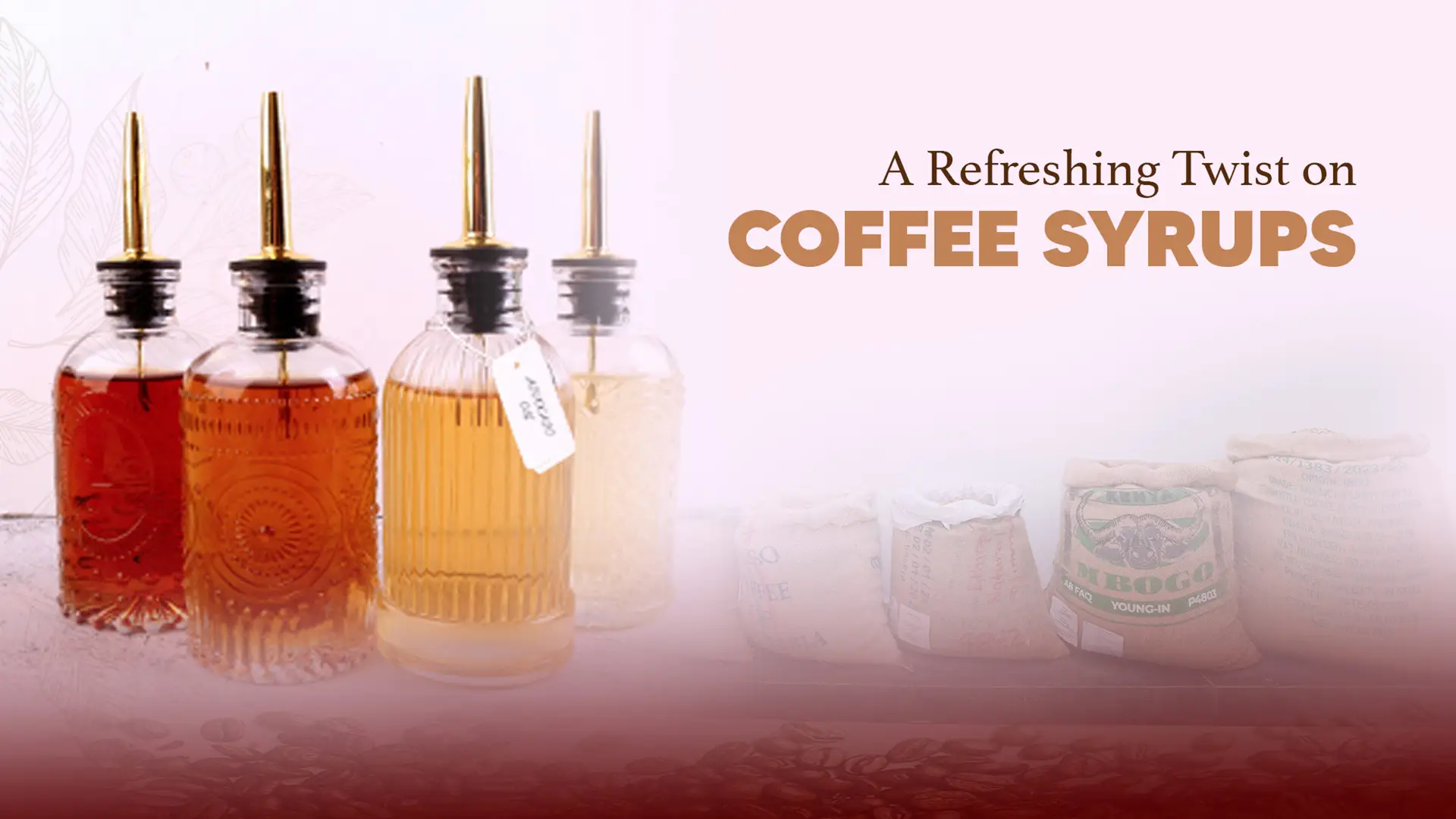
I. Introduction to Coffee Syrups
Definition of coffee syrups
Coffee syrups are sweeteners made from a mixture of sugar, water, and flavor-based components to help improve the flavor of your favorite coffee drinks. These flavored syrups come in many flavors, including vanilla, caramel, and hazelnut, allowing coffee lovers to customize their drinks to taste. They are particularly favored for incorporating sweetness without the heft of granulated sugar. Some health concerns have led to companies offering their versions of sugar-free coffee syrups. Coffee syrups are key to elevating their coffee experience to create tasty drinking in each sip.
Brief history and origin of coffee syrups
The Beginnings of Coffee Syrup Coffee syrups have been around since the early 20th century, and they all started in New England, and Rhode Island in particular. Coffee syrup started out as a convenient way of sweetening and enhancing the flavor of coffee, and grew into a regional favorite for its unique flavor. With an expanding coffee culture came an expanding portfolio of coffee syrups, a proliferation of flavors and iterations. Coffee syrups are essential in the kitchen to coffee enthusiasts and hip adjuncts to desserts and cocktails. Lifestyle Coffee syrups offend hipster purist sensibilities As more artisanal providers come on stream, coffee syrups have become popular around the world to dress up coffee.
II. Types of Coffee Syrups
Traditional coffee syrups
Coffee lovers often reach for traditional coffee syrup, a classic known for its high-quality, syrupy-sweet, flavor-enhancing goodness that pairs well with any brew. Most syrups contain only a few ingredients: sugar, water, and natural flavorings. Traditional coffee syrups have flavored options, such as vanilla, hazelnut, and caramel. From each, there is a unique taste experience, giving consumers a coffee customized to their taste. Traditional coffee syrups are utilized in cafes and around the house, giving them a classic, flavorful touch in drinks and making them popular among individuals looking for a yummy experience.
Artisanal coffee syrups
Artisanal coffee syrups are gaining traction with coffee enthusiasts who crave specialty sips featuring robust flavors. Specialty coffees are made even more special through small-batch syrups made from superior ingredients, many times including natural sweeteners and inventive flavors. Other Add-Ins Artisanal Coffee Syrups Will Focus on Variety Expect lavender, chai spice, or seasonal fruit blends rather than mass-produced nonsense. These mixers are more than a delicious addition to your coffee, they offer a creative take on flavor that allows you to make a wider variety of a specialty drinks at home. Artisanal coffee syrups give coffee lovers the freedom to explore the depths of flavor that can be found in a favorite coffee bean while turning their “Cup of Joe” into an extraordinary daily ritual.
Comparing types by sweetness and flavor profiles.
Meeting their dietary needs is extremely important for someone watching their sugar intake while still wanting to enjoy coffee. Mass-produced syrups are basic. Handcrafted ones, like caramel and spiced vanilla, offer complex flavors for your coffee. Free sugar syrup is perfect for trimming calories without sacrificing flavor. Handcrafted syrups like these are amazing as they completely transform the taste with every sip while preserving the wonderful aromatic taste of coffee. These factors are also why your average Joe can finally pick coffee syrups that align with their needs and enhance the taste of their morning cup of Joe. The right coffee syrup can transform your brew. Learn which flavors suit you and which ones to steer clear of.

III. Coffee Syrup Flavors
Traditional coffee syrups
Vanilla syrup for coffee has quite a following from coffee connoisseurs, thanks to its deep-smooth taste complementing a variety of coffee blends. This sweetener brings a light touch of sweetness to hot or cold coffee beverages without dominating the coffee flavor. A few shots is all it takes to make a number of beverage creations, including lattes, cappuccinos, cocoas, mochas, and frappes. Therefore is it an essential for many cafes and households. This bean soaks up other rich flavors (think caramel or hazelnut) very well, which is why we’ve included several fun coffee recipes and ensure each cup is exciting!
Hazelnut, caramel, and chocolate flavors
Coffee syrup is flavored such as hazelnut, chocolate, and caramel. For coffee-based drinks like lattes and cappuccinos, add Hazelnut syrup to impart a rich, nutty flavour but without more calories. Caramel syrup adds a rich, sweet, buttery vanilla flavor to your favorite drinks including lattes, frappes, mochas and even dessert cocktails or frozen concoctions. For this consideration, I would recommend chocolate syrup for those who take their coffee sweet, equipping any coffee for dessert. These flavors all lend themselves to great tasting coffee beverages and are something fans can easily play in a world of flavor. If they add hazelnut, caramel, or chocolate syrup into the coffee mix, it’s even better.
Exploring unique and exotic flavors
Instead, as a daily delicious coffee syrup, exploring unique and exotic flavors. From spicy chai to tropical coconut, these unique syrups bring a new dimension of flavor that can dance across the palate. Flavors such as maple bourbon or lavender are delightful alternatives for those not wanting the traditional options. Milder exotic flavors can also be evoked by flavors found in world cuisines. Seed spices like cardamom or cinnamon evoke aromas to round the coffee profile. These new syrups allow coffee lovers to diversify their cups of coffee, taking their coffee rituals a notch higher by creating delicious and unforgettable beverages.
How flavor choice affects the overall coffee experience
Flavor has a strong effect on your coffee experience, and ultimately you’ll be able to find more pleasure and satisfaction with coffee. Vanilla, hazelnut, or caramel are other flavors that can give a whole new element to the taste of the coffee. For example, a squirt of chocolate syrup creates an indulgent treat, while spicy flavors like cinnamon can add warmth to your cup. This could also affect your mood and energy, so coffee addicts will find trial and error comes in handy. We want coffee drinkers to know how flavor affects their coffee experience so they can make choices that perfectly fit their taste preferences and make their coffee moments better, cup after cup.
IV. Sugar-Free Coffee Syrup Options
Importance of sugar-free alternatives
Sugar-free alternatives are entering into the coffee limelight, particularly with the rise in popularity of sugar-free coffee syrups. These are the syrups to add to your coffee that won’t unnecessarily spike your blood sugar or pile on extra calories. Whether youre someone who s controlling your sugar intake, or just drinking lower calories this is so many ways to switch it up and enjoy the amazing flavors of Vanilla, Hazelnut, Caramel to make this Sugar Free syrup selection just right for you to enjoy thorough out the day. Sugar-Free solutions allow for coffee lovers to enjoy their preferred espresso beverages without betraying their wellness, enjoying a more enjoyable taste experience and at the same time being true to their well-being targets. More Sequence of Options Some Sequence of Options Any Health Lifestyle More Choices Any Health Lifestyle Goals.
Benefits of using sugar-free coffee syrups
For those who might be wondering whether this sugar-free option is really worth the hype, then here are some of the benefits one stands to gain from using Sugar-Free Coffee Syrups. To begin with, the syrups are an excellent means of enjoying vanilla, caramel, or hazelnut flavor. Additionally, one is assured of not having to worry about sugar and calories. This is very helpful for those of us who are trying to lose weight or monitor our carb intake. Others avoid sugar crashes and stay active throughout the day. For a good dental future, sugar-free alternatives eliminate the chance of cavities caused by some of the sugary beverages. In short, sugar-free coffee syrups are a sugar-free method to flavor an average sugar with all the fantastic flavor and no calories. This is a perfect start to a healthier way of life.
Overview of the best sugar-free coffee syrups on the market
A top 10 sugar-free coffee syrup list brings to you a variety of tasty options that cater to different preferences. There are a number of delightful flavored sugar-free syrups from many popular brands, like Monin and Torani, so you can enjoy everything from vanilla and caramel to hazelnut. Jordan’s Skinny Syrups is also a favorite, and I love that they have so many flavors and even zero-calorie options. Maple Grove Farms also offers real maple taste without the sugar in a sugar-free syrup. They’re simply delicious syrups and they also fit into a healthy lifestyle making them an excellent addition to add to your coffee without any of the negative aspects!.
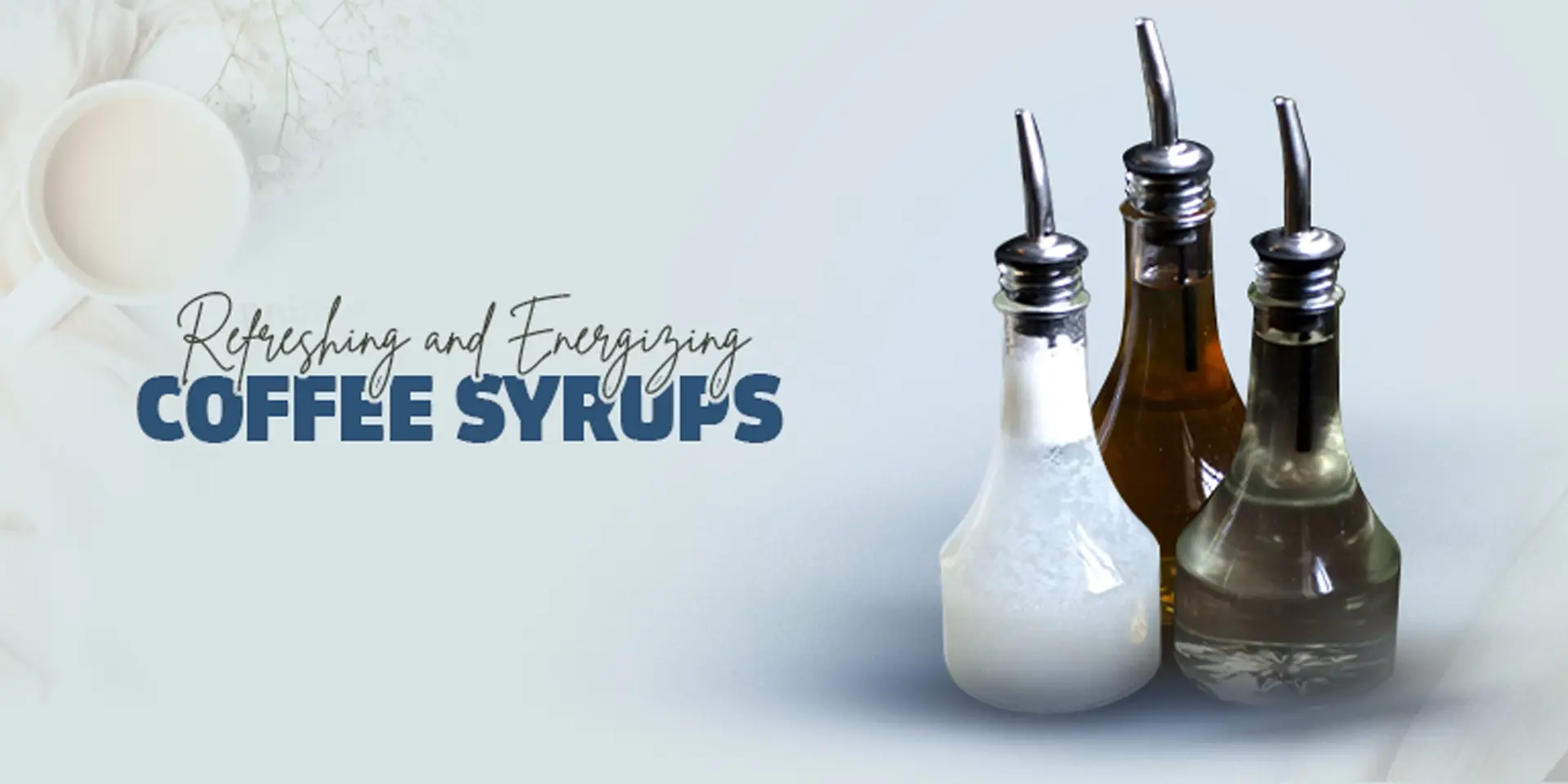
V. Best Coffee Syrups
Criteria for determining the best coffee syrups
Flavor, sweetness, and quality of ingredients are the primary characteristics to consider when we compare coffee syrups and decide which one will be the best. So vanilla syrup is creamy, delicate and sweet with a natural taste and sweeteners – for example. Hazelnut syrup: Popular when you want a warm and nutty flavor, highly low-calorie hazelnut syrup can be created utilizing fine quality hazelnut essence mixed with sugar alternatives. Caramel syrup is only slightly sweet, and pairs the taste of caramel with other low-calorie natural sweeteners for a guilt-free indulgence. By reading ingredient labels, coffee connoisseurs can discover syrups without artificial ingredients and select those that contribute to their coffee experience, while serving their health goals.
User reviews and ratings for each recommended syrup
Reviews and ratings give a real-world perspective on how the sugar-free coffee syrups perform. For example, Monin syrups are highly praised for their authentic tastes and smooth texture, with vanilla and caramel being popular among many users. Torani syrups are a big hit, too, especially the hazelnut flavor, which reviewers say works great for those attempting to keep it naturally rich but without too much sweetness. Conversely, Jordan’s Skinny Syrups receives kudos for its variety of flavors and zero calories, which attracts more health-conscious consumers. Coffee lovers can even get more confident choosing the best syrup to upgrade their coffee experience by looking through these user experiences and ratings.
VI. How to Use Coffee Syrups
Tips for incorporating coffee syrups into your coffee routine
Coffee syrups can easily lift your coffee experience into your everyday activity. To test for sweetness, begin with a low amount, usually 1 to 2 teaspoons. Try some flavors like vanilla, hazelnut, or caramel, and see what you like best. Combine syrups with milk or cream before incorporating them into your coffee for a more balanced flavor. And coffee syrups are game-changers in iced or blended drinks. Feel free to find creative uses like adding to smoothies or desserts. With these suggestions, you will learn to augment your coffee experience with coffee syrups!
Creative ways to use syrups in desserts and other beverages
Sugar-free coffee syrups are used for more than just improving your cup of morning coffee. They can add involvement to desserts and other drinks, too. Drizzle caramel syrup over ice cream or yogurt for a no-guilt topping. Use vanilla syrup in cake batters or frosting to impart a luscious flavor. For drinks, add hazelnut syrup to smoothies or milkshakes for a nutty little kick. You can also whip up delicious cocktails by combining flavored syrups with spirits and mixers. These are just some ideas to elevate your basic snacks into decadent kernel-removed, carby masterpieces, and this is the best way to embark on any no-sugar-making adventures you desire!
Pairing coffee syrups with different coffee types
Choosing the right coffee syrup to complement the various types of coffee can help take your beverage experience to the next level. Vanilla syrup makes for a great addition to a classic espresso. Try it shaken up to create a smooth, creamy flavor that pairs well with the coffee’s boldness. Caramel syrup complements the natural bitterness of a cold brew with a hint of sweetness. If you love a latte, try hazelnut syrup to add a nutty complexity that complements steamed milk. Also, using flavorful or flavored syrups to make mochas adds to the decadence. Knowing these pairings allows coffee lovers to enhance their favorite brews and enjoy a customized coffee experience.
So, Why Use Coffee Syrups? They are a simple and easy solution to making different flavors, including vanilla, hazelnut, and many others, without struggling with different mixes. Multiple sugar-free syrups are available on the market, which means they can be a possible alternative for anyone looking for comparatively healthy choices. Coffee syrups can also be creatively used in desserts and other drinks, expanding your culinary horizons . In short, by adding these syrups to your everyday system (literally), you can take your coffee journey up a notch and discover unique flavor pairings tailored to you or whoever you are serving.
What was the original coffee syrup?
Original Coffee Syrup originated in Rhode Island in the 1930’s. The concoction was invented by Italian immigrants and is the base, more or less, for coffee milk, the state beverage. It’s brewed coffee that is simmered with sugar to deliver an intensely sweet, concentrated flavor. It was popularized by brands like Autocrat and Dave’s Coffee.
What are the different kinds of syrups that give the differences?
There are five primary types of syrups used in making coffee: flavoring syrups, mixer or blended syrups, agave nectar, concentrated flavors, and sweetening syrups.
- Flavoring syrups like vanilla or hazelnut are actually designed for coffee and are better at striking a balance to lend sweetness while also adding a roasted flavor.
- A bit of agave syrup lends a gentle caramel quality.
- Mixed-drink syrups are for cocktails, not coffee.
- Flavor concentrates are strong and may be caffeinated.
- Syrups that are for cooking for food, not for drink.
What is the shelf life of coffee syrup?
Unopened coffee syrup will keep for 2 years; opened, you should use refrigerated coffee syrup within 6-12 months. Shelf life: Shelf life depends on the ingredients high-sugar or preservative-rich syrups keep for longer. Spoilage signs, on the other hand, are sour odor, mold and thick consistency. For made-at-home versions store in the fridge for 2–3 weeks.
Are coffee syrups healthy?
It is not exactly healthy: Coffee syrups contain a lot of sugar and calories. Most brands have 10–15g of sugar per tablespoon, leading to weight gain, blood sugar spikes, and cravings. Others even have fake flavors or preservatives in them. But eating them in moderation, or selecting natural, low-sugar options can cut health risks.
How much caffeine is in coffee syrup ?
Caffeine content in coffee syrup varies between brands, but is usually on the order of 14 to 50 mg of caffeine per 2 tablespoon serving. Homemade or concentrated syrups might have more, and although flavored syrups with no coffee in them may have none. Be sure to check the label or your recipe source to make sure.
Popular Posts
Pour Over Coffee: A Simple Way to Brew Rich, Flavorful Coffee
Pour Over Coffee: How to Brew the Perfect Cup Every Time Pour Over Coffee: How to Brew the Perfect Cup...
Read MoreArabic Coffee: A Traditional Brew with Rich Flavors
Arabic Coffee History That Will Fascinate You Arabic Coffee History That Will Fascinate You What is Arabic coffee? Arabic coffee,...
Read MoreCoffee Urns: Perfect for Brewing Large Quantities of Coffee
Coffee Urn: Elevate Your Gathering with Perfectly Brewed Coffee! Coffee Urn: Elevate Your Gathering with Perfectly Brewed Coffee! I. Introduction...
Read MoreSugar Free Syrups: Sweeten Your Drinks Without the Calories
Sugar Free Syrup: Healthier Alternatives for Sweetening Your Drinks Sugar Free Syrup: Healthier Alternatives for Sweetening Your Drinks 1. Introduction:...
Read More
I. Introduction to Coffee Syrups
Definition of coffee syrups
Coffee syrups are sweeteners made from a mixture of sugar, water, and flavor-based components to help improve the flavor of your favorite coffee drinks. These flavored syrups come in many flavors, including vanilla, caramel, and hazelnut, allowing coffee lovers to customize their drinks to taste. They are particularly favored for incorporating sweetness without the heft of granulated sugar. Some health concerns have led to companies offering their versions of sugar-free coffee syrups. Coffee syrups are key to elevating their coffee experience to create tasty drinking in each sip.
Brief history and origin of coffee syrups
The Beginnings of Coffee Syrup Coffee syrups have been around since the early 20th century, and they all started in New England, and Rhode Island in particular. Coffee syrup started out as a convenient way of sweetening and enhancing the flavor of coffee, and grew into a regional favorite for its unique flavor. With an expanding coffee culture came an expanding portfolio of coffee syrups, a proliferation of flavors and iterations. Coffee syrups are essential in the kitchen to coffee enthusiasts and hip adjuncts to desserts and cocktails. Lifestyle Coffee syrups offend hipster purist sensibilities As more artisanal providers come on stream, coffee syrups have become popular around the world to dress up coffee.
II. Types of Coffee Syrups
Traditional coffee syrups
Coffee lovers often reach for traditional coffee syrup, a classic known for its high-quality, syrupy-sweet, flavor-enhancing goodness that pairs well with any brew. Most syrups contain only a few ingredients: sugar, water, and natural flavorings. Traditional coffee syrups have flavored options, such as vanilla, hazelnut, and caramel. From each, there is a unique taste experience, giving consumers a coffee customized to their taste. Traditional coffee syrups are utilized in cafes and around the house, giving them a classic, flavorful touch in drinks and making them popular among individuals looking for a yummy experience.
Artisanal coffee syrups
Artisanal coffee syrups are gaining traction with coffee enthusiasts who crave specialty sips featuring robust flavors. Specialty coffees are made even more special through small-batch syrups made from superior ingredients, many times including natural sweeteners and inventive flavors. Other Add-Ins Artisanal Coffee Syrups Will Focus on Variety Expect lavender, chai spice, or seasonal fruit blends rather than mass-produced nonsense. These mixers are more than a delicious addition to your coffee, they offer a creative take on flavor that allows you to make a wider variety of a specialty drinks at home. Artisanal coffee syrups give coffee lovers the freedom to explore the depths of flavor that can be found in a favorite coffee bean while turning their “Cup of Joe” into an extraordinary daily ritual.
Comparing types by sweetness and flavor profiles.
Meeting their dietary needs is extremely important for someone watching their sugar intake while still wanting to enjoy coffee. Mass-produced syrups are basic. Handcrafted ones, like caramel and spiced vanilla, offer complex flavors for your coffee. Free sugar syrup is perfect for trimming calories without sacrificing flavor. Handcrafted syrups like these are amazing as they completely transform the taste with every sip while preserving the wonderful aromatic taste of coffee. These factors are also why your average Joe can finally pick coffee syrups that align with their needs and enhance the taste of their morning cup of Joe. The right coffee syrup can transform your brew. Learn which flavors suit you and which ones to steer clear of.

III. Coffee Syrup Flavors
Traditional coffee syrups
Vanilla syrup for coffee has quite a following from coffee connoisseurs, thanks to its deep-smooth taste complementing a variety of coffee blends. This sweetener brings a light touch of sweetness to hot or cold coffee beverages without dominating the coffee flavor. A few shots is all it takes to make a number of beverage creations, including lattes, cappuccinos, cocoas, mochas, and frappes. Therefore is it an essential for many cafes and households. This bean soaks up other rich flavors (think caramel or hazelnut) very well, which is why we’ve included several fun coffee recipes and ensure each cup is exciting!
Hazelnut, caramel, and chocolate flavors
Coffee syrup is flavored such as hazelnut, chocolate, and caramel. For coffee-based drinks like lattes and cappuccinos, add Hazelnut syrup to impart a rich, nutty flavour but without more calories. Caramel syrup adds a rich, sweet, buttery vanilla flavor to your favorite drinks including lattes, frappes, mochas and even dessert cocktails or frozen concoctions. For this consideration, I would recommend chocolate syrup for those who take their coffee sweet, equipping any coffee for dessert. These flavors all lend themselves to great tasting coffee beverages and are something fans can easily play in a world of flavor. If they add hazelnut, caramel, or chocolate syrup into the coffee mix, it’s even better.
Exploring unique and exotic flavors
Instead, as a daily delicious coffee syrup, exploring unique and exotic flavors. From spicy chai to tropical coconut, these unique syrups bring a new dimension of flavor that can dance across the palate. Flavors such as maple bourbon or lavender are delightful alternatives for those not wanting the traditional options. Milder exotic flavors can also be evoked by flavors found in world cuisines. Seed spices like cardamom or cinnamon evoke aromas to round the coffee profile. These new syrups allow coffee lovers to diversify their cups of coffee, taking their coffee rituals a notch higher by creating delicious and unforgettable beverages.
How flavor choice affects the overall coffee experience
Flavor has a strong effect on your coffee experience, and ultimately you’ll be able to find more pleasure and satisfaction with coffee. Vanilla, hazelnut, or caramel are other flavors that can give a whole new element to the taste of the coffee. For example, a squirt of chocolate syrup creates an indulgent treat, while spicy flavors like cinnamon can add warmth to your cup. This could also affect your mood and energy, so coffee addicts will find trial and error comes in handy. We want coffee drinkers to know how flavor affects their coffee experience so they can make choices that perfectly fit their taste preferences and make their coffee moments better, cup after cup.
IV. Sugar-Free Coffee Syrup Options
Importance of sugar-free alternatives
Sugar-free alternatives are entering into the coffee limelight, particularly with the rise in popularity of sugar-free coffee syrups. These are the syrups to add to your coffee that won’t unnecessarily spike your blood sugar or pile on extra calories. Whether youre someone who s controlling your sugar intake, or just drinking lower calories this is so many ways to switch it up and enjoy the amazing flavors of Vanilla, Hazelnut, Caramel to make this Sugar Free syrup selection just right for you to enjoy thorough out the day. Sugar-Free solutions allow for coffee lovers to enjoy their preferred espresso beverages without betraying their wellness, enjoying a more enjoyable taste experience and at the same time being true to their well-being targets. More Sequence of Options Some Sequence of Options Any Health Lifestyle More Choices Any Health Lifestyle Goals.
Benefits of using sugar-free coffee syrups
Sugar-Free Coffee Syrups offer numerous benefits, making them an ideal choice for health-conscious coffee enthusiasts. First off, they are an enjoyable way to experience the rich flavor of vanilla،, hazelnut،, caramel without any of the calories and sugar. Especially useful for those of us trying to lose weight or watching carbs. Also, sugar-free syrups can avoid sugar crashes and provide energy during the day. They make good dental sense, too, because they lower the risk of cavities caused by sugary beverages. Sugar-free coffee syrups make adding delicious flavors to your beverage easy without the added sugar (and calories!) , which is undoubtedly a great step towards a healthier lifestyle.
Overview of the best sugar-free coffee syrups on the market
A top 10 sugar-free coffee syrup list brings to you a variety of tasty options that cater to different preferences. There are a number of delightful flavored sugar-free syrups from many popular brands, like Monin and Torani, so you can enjoy everything from vanilla and caramel to hazelnut. Jordan’s Skinny Syrups is also a favorite, and I love that they have so many flavors and even zero-calorie options. Maple Grove Farms also offers real maple taste without the sugar in a sugar-free syrup. They’re simply delicious syrups and they also fit into a healthy lifestyle making them an excellent addition to add to your coffee without any of the negative aspects!.

V. Best Coffee Syrups
Criteria for determining the best coffee syrups
Flavor, sweetness, and quality of ingredients are the primary characteristics to consider when we compare coffee syrups and decide which one will be the best. So vanilla syrup is creamy, delicate and sweet with a natural taste and sweeteners – for example. Hazelnut syrup: Popular when you want a warm and nutty flavor, highly low-calorie hazelnut syrup can be created utilizing fine quality hazelnut essence mixed with sugar alternatives. Caramel syrup is only slightly sweet, and pairs the taste of caramel with other low-calorie natural sweeteners for a guilt-free indulgence. By reading ingredient labels, coffee connoisseurs can discover syrups without artificial ingredients and select those that contribute to their coffee experience, while serving their health goals.
User reviews and ratings for each recommended syrup
Reviews and ratings give a real-world perspective on how the sugar-free coffee syrups perform. For example, Monin syrups are highly praised for their authentic tastes and smooth texture, with vanilla and caramel being popular among many users. Torani syrups are a big hit, too, especially the hazelnut flavor, which reviewers say works great for those attempting to keep it naturally rich but without too much sweetness. Conversely, Jordan’s Skinny Syrups receives kudos for its variety of flavors and zero calories, which attracts more health-conscious consumers. Coffee lovers can even get more confident choosing the best syrup to upgrade their coffee experience by looking through these user experiences and ratings.
VI. How to Use Coffee Syrups
Tips for incorporating coffee syrups into your coffee routine
Coffee syrups can easily lift your coffee experience into your everyday activity. To test for sweetness, begin with a low amount, usually 1 to 2 teaspoons. Try some flavors like vanilla, hazelnut, or caramel, and see what you like best. Combine syrups with milk or cream before incorporating them into your coffee for a more balanced flavor. And coffee syrups are game-changers in iced or blended drinks. Feel free to find creative uses like adding to smoothies or desserts. With these suggestions, you will learn to augment your coffee experience with coffee syrups!
Creative ways to use syrups in desserts and other beverages
Sugar-free coffee syrups are used for more than just improving your cup of morning coffee. They can add involvement to desserts and other drinks, too. Drizzle caramel syrup over ice cream or yogurt for a no-guilt topping. Use vanilla syrup in cake batters or frosting to impart a luscious flavor. For drinks, add hazelnut syrup to smoothies or milkshakes for a nutty little kick. You can also whip up delicious cocktails by combining flavored syrups with spirits and mixers. These are just some ideas to elevate your basic snacks into decadent kernel-removed, carby masterpieces, and this is the best way to embark on any no-sugar-making adventures you desire!
Pairing coffee syrups with different coffee types
Choosing the right coffee syrup to complement the various types of coffee can help take your beverage experience to the next level. Vanilla syrup makes for a great addition to a classic espresso. Try it shaken up to create a smooth, creamy flavor that pairs well with the coffee’s boldness. Caramel syrup complements the natural bitterness of a cold brew with a hint of sweetness. If you love a latte, try hazelnut syrup to add a nutty complexity that complements steamed milk. Also, using flavorful or flavored syrups to make mochas adds to the decadence. Knowing these pairings allows coffee lovers to enhance their favorite brews and enjoy a customized coffee experience.
So, Why Use Coffee Syrups? They are a simple and easy solution to making different flavors, including vanilla, hazelnut, and many others, without struggling with different mixes. Multiple sugar-free syrups are available on the market, which means they can be a possible alternative for anyone looking for comparatively healthy choices. Coffee syrups can also be creatively used in desserts and other drinks, expanding your culinary horizons . In short, by adding these syrups to your everyday system (literally), you can take your coffee journey up a notch and discover unique flavor pairings tailored to you or whoever you are serving.
What was the original coffee syrup?
Original Coffee Syrup originated in Rhode Island in the 1930’s. The concoction was invented by Italian immigrants and is the base, more or less, for coffee milk, the state beverage. It’s brewed coffee that is simmered with sugar to deliver an intensely sweet, concentrated flavor. It was popularized by brands like Autocrat and Dave’s Coffee.
What are the different kinds of syrups that give the differences?
There are five primary types of syrups used in making coffee: flavoring syrups, mixer or blended syrups, agave nectar, concentrated flavors, and sweetening syrups.
- Flavoring syrups like vanilla or hazelnut are actually designed for coffee and are better at striking a balance to lend sweetness while also adding a roasted flavor.
- A bit of agave syrup lends a gentle caramel quality.
- Mixed-drink syrups are for cocktails, not coffee.
- Flavor concentrates are strong and may be caffeinated.
- Syrups that are for cooking for food, not for drink.
What is the shelf life of coffee syrup?
Unopened coffee syrup will keep for 2 years; opened, you should use refrigerated coffee syrup within 6-12 months. Shelf life: Shelf life depends on the ingredients high-sugar or preservative-rich syrups keep for longer. Spoilage signs, on the other hand, are sour odor, mold and thick consistency. For made-at-home versions store in the fridge for 2–3 weeks.
Are coffee syrups healthy?
It is not exactly healthy: Coffee syrups contain a lot of sugar and calories. Most brands have 10–15g of sugar per tablespoon, leading to weight gain, blood sugar spikes, and cravings. Others even have fake flavors or preservatives in them. But eating them in moderation, or selecting natural, low-sugar options can cut health risks.
How much caffeine is in coffee syrup ?
Caffeine content in coffee syrup varies between brands, but is usually on the order of 14 to 50 mg of caffeine per 2 tablespoon serving. Homemade or concentrated syrups might have more, and although flavored syrups with no coffee in them may have none. Be sure to check the label or your recipe source to make sure.
Popular Posts
Macchiato vs Other Coffees: Barista-Backed Comparisons
Macchiato vs Other Coffees: Barista-Backed Comparisons Macchiato vs Other Coffees: Barista-Backed Comparisons 1. Introduction: Exploring the World of Coffee Drinks...
Read MorePour Over Coffee: A Simple Way to Brew Rich, Flavorful Coffee
Pour Over Coffee: How to Brew the Perfect Cup Every Time Pour Over Coffee: How to Brew the Perfect Cup...
Read MoreCortadito Coffee: A Sweet, Bold Cuban Espresso Drink
Cortadito Coffee: Why This Cuban Drink Should Be Your Next Favorite Cortadito Coffee: Why This Cuban Drink Should Be Your...
Read MoreChristmas Coffee: Festive Flavors to Warm Your Holiday
Christmas Coffee: Delight Your Guests with These Festive Drinks Christmas Coffee: Delight Your Guests with These Festive Drinks Introduction of...
Read MoreSugar Free Syrups: Sweeten Your Drinks Without the Calories
Sugar Free Syrup: Healthier Alternatives for Sweetening Your Drinks Sugar Free Syrup: Healthier Alternatives for Sweetening Your Drinks 1. Introduction:...
Read MoreColombian Coffee: Discover the Rich Flavors of Colombia’s Best
Discover the Richness of Colombia Coffee: A Complete Guide Discover the Richness of Colombia Coffee: A Complete Guide Introduction to...
Read More

